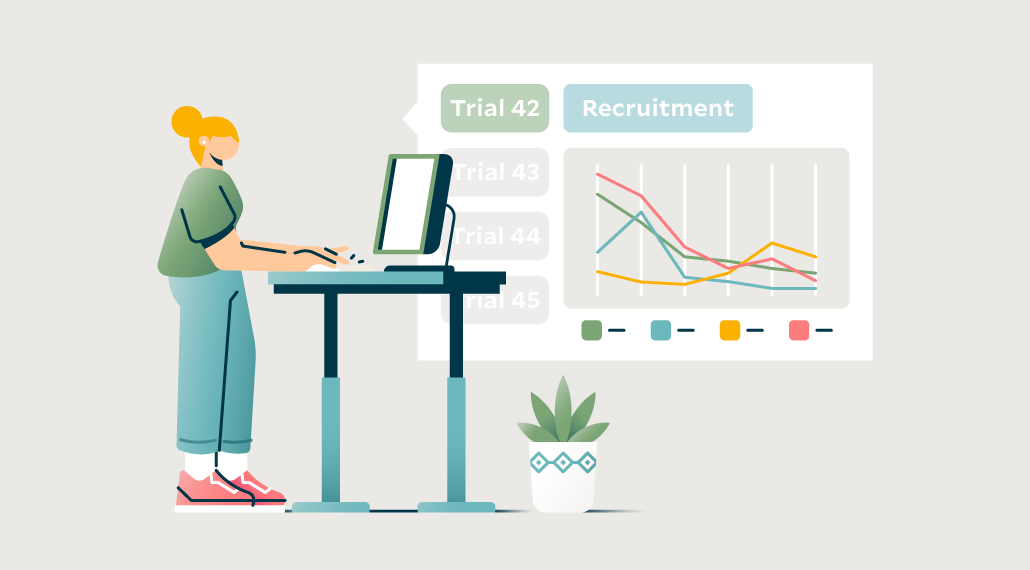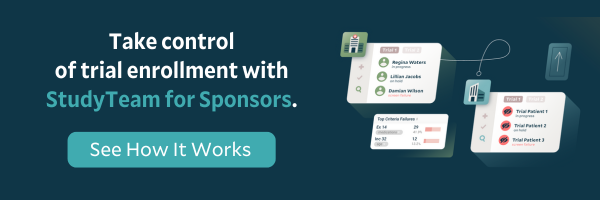November 2nd, 2022
3 Major GI Clinical Trial Enrollment Challenges (and How to Address Them)
By OneStudyTeam

Roughly 40% of adults suffer from functional gastrointestinal (GI) disorders worldwide. However, despite the prevalence of GI conditions, clinical trials for GI treatments are notoriously difficult to enroll. In fact, IBD trials alone typically have a screen failure rate between 50% and 70%.
There are many factors that have a significant impact on the success of GI clinical trial enrollment, including simply an increase in competition for eligible patients within gastroenterology research, but there are three enrollment challenges that stand out as major barriers:
- Timing is everything..
Time waits for no man no clinical trial—and GI trials in particular have a rocky relationship with timing. Many GI trials require patients to be in an active flare-up to qualify for enrollment, which means the perfect patient might appear at exactly the wrong time. In fact, just a matter of days could be the difference between successful enrollment and screening failure.
Even if a patient is experiencing an active flare-up, they still might not be eligible. Most GI trials require patients to be off of any previous GI medication for an extended period of time to wash it completely out of the system. These “washout periods” usually range between 4 - 8 weeks. Not only can this spark hesitation in patients unwilling to stop their current medication, it can also significantly slow down enrollment timelines.
Because timing has such a big impact on enrollment eligibility, it is incredibly important for sponsors—and in turn, sites—to prioritize efficient rescreening tools. Typically, sites track potential rescreens with reminders written on sticky notes or in lengthy spreadsheets. But who hasn’t misplaced a note in a giant stack of papers or overlooked a line in a massive spreadsheet?
Tools like StudyTeam make sure eligible rescreen patients don’t fall through the cracks by offering a built in rescreening feature with automatic reminders to follow up. Sites can easily flag and track a patient eligible for rescreening while giving sponsors visibility into the rescreen potential for a specific site or trial.
- Patients may be hesitant to enroll.
Nearly all GI clinical trials require patients to undergo a colonoscopy, a necessary yet pretty invasive procedure. GI trials can also require hefty time commitments. Because many of the trials use infusion-based therapies, patients may be asked to sit in a chair for 4+ hours. Requirements such as these are likely to cause many patients to decline to participate.
These extra barriers are important for sponsors to monitor. By diligently tracking patients’ reasons for not enrolling or continuing in a trial, sponsors can spot patterns and commonalities. And most importantly, they can react in real time with potential solutions, like increased incentives or better accommodations for patients.
This is where StudyTeam comes in handy. Our platform makes it easy for sites to record a patient’s reason for declining to participate, giving sponsors a clear view into what’s slowing enrollment.
- The I/E criteria lists are long.
It’s not uncommon for a GI clinical trial to have around 20 inclusion and exclusion criteria. That’s a lot of opportunities for pre-screening and screening failures.
Beyond their implications on enrollment, these lengthy I/E lists can be difficult for sites to track with traditional tools and often create more administrative burden on site staff. StudyTeam makes tracking I/E criteria much simpler—and faster—with easy-to-use dropdown lists and pre-screening checklists. Plus, sponsors get to see this screening and enrollment data in real time, allowing them to spot if otherwise eligible patients are excluded because of the same criterion. This could help spark conversations about which I/E criteria are necessary and which could be adjusted to support enrollment. Real-time adaptability is a huge factor in increasing and speeding up recruitment, and StudyTeam makes it possible.
Want more expert insight into how to boost clinical trial enrollment? Check out our ebook “Strategies to Fill Gaps in Patient Recruitment and Enrollment” or get a quick StudyTeam demo.
Related Posts

How Does a Trial Manager in Greece Improve Clinical Trial Operations with StudyTeam®?
Dimitris Tziogas, local trial manager at a biotechnology company in ...
Read More
How to Address Key Clinical Trial Challenges, According to Clinresco Centres in South Africa
There’s no single solution to overcoming a research site’s specific ...
Read More
3 Clinical Trial Billing Challenges Research Sites Solve with StudyTeam
Challenge 1: Complicated coverage analysis Challenge 2: Tedious budgeting ...
Read More

.png?width=64&name=OST%20Transparent%20(1).png)